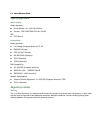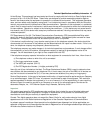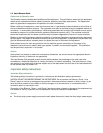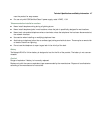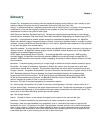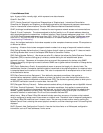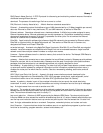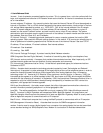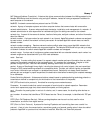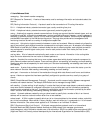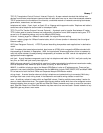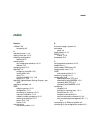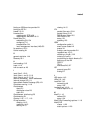4 User’s Reference Guide
internet: A set of networks connected together by routers. This is a general term, not to be confused with the
large, multi-organizational collection of IP networks known as the Internet. An internet is sometimes also known
as an internetwork.
internet address, IP address: Any computing device that uses the Internet Protocol (IP) must be assigned an
internet or IP address. This is a 32-bit number assigned by the system administrator, usually written in the form
of 4 decimal fields separated by periods, e.g., 192.9.200.1. Part of the internet address is the IP network
number (IP network address), and part is the host address (IP host address). All machines on a given IP
network use the same IP network number, and each machine has a unique IP host address. The system
administrator sets the subnet mask to specify how much of the address is network number and how much is
host address. See also Class A, B, and C networks.
IP (Internet Protocol): A networking protocol developed for use on computer systems that use the UNIX
operating system. Often used with Ethernet cabling systems. In this manual, IP is used as an umbrella term to
cover all packets and networking operations that include the use of the Internet Protocol. See also TCP/IP.
IP address, IP host address, IP network address: See internet address.
IP broadcast: See broadcast.
IP tunneling: See AURP.
IPX (Internet Package Exchange): A protocol used by Novell Netware networks.
ISDN (Integrated Services Digital Network): A method of transmitting data digitally over telephone lines.
ISP (Internet service provider): A company that provides Internet-related services. Most importantly, an ISP
provides Internet access services and products to other companies and consumers.
ITU (International Telecommunication Union): United Nations specialized agency for telecommunications.
Successor to CCITT.
K56flex: A modem data transmission technology standard created by Lucent Technologies and Rockwell
International. Its purpose is to take advantage of the largely digital portions of the telephone system in order to
exceed the theoretical speed limitations of data transmission over analog telephone lines. A competing
technology called “x2,” created by U.S. Robotics/3Com, performs a similar function. In February, 1998, the
interested parties agreed on a unified standard called V.90, also known as V.PCM, which merges the K56flex
standard with the competing x2 standard. In September, 1998, the International Telecommunications Union is
expected to ratify the unified standard, thereby allowing interoperability of modems and ISPs’ central site
equipment, with appropriate firmware upgrades.
LAN (Local Area Network): A privately owned network that offers high-speed communications channels to
connect information processing equipment in a limited geographic area.
LocalTalk: The cabling specification for AppleTalk running at a speed of 230.4 kbps (kilobits per second).
MacIP: A protocol in which IP packets are encapsulated within AppleTalk headers, for transmission over
AppleTalk networks. MacIP requires the presence of at least one AppleTalk–IP gateway. MacIP is usually used to
allow an AppleTalk computer to communicate with an IP computer.
MacIP client: A Macintosh computer that is using the MacIP protocol to communicate with an IP computer.
MIB (Management Information Base): A standardized structure for SNMP management information.
modem: A device used to convert digital signals from a computer into analog signals that can be transmitted
across standard analog (not ISDN) telephone lines. Modem is a contraction of modulator-demodulator.



